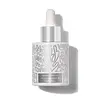What's inside
What's inside
 Key Ingredients
Key Ingredients

 Benefits
Benefits

 Ingredients Side-by-side
Ingredients Side-by-side

Water
Skin ConditioningGlycerin
HumectantPentylene Glycol
Skin ConditioningSodium Hyaluronate
HumectantPanthenol
Skin ConditioningSodium Benzoate
MaskingSodium Levulinate
Skin ConditioningZinc PCA
HumectantXylitylglucoside
HumectantAnhydroxylitol
HumectantCitric Acid
BufferingXylitol
HumectantAscorbyl Glucoside
AntioxidantGlucose
HumectantPrunus Domestica Fruit Extract
MoisturisingTremella Fuciformis Extract
HumectantTuber Melanosporum Extract
HumectantGlycyrrhiza Glabra Root Extract
BleachingWater, Glycerin, Pentylene Glycol, Sodium Hyaluronate, Panthenol, Sodium Benzoate, Sodium Levulinate, Zinc PCA, Xylitylglucoside, Anhydroxylitol, Citric Acid, Xylitol, Ascorbyl Glucoside, Glucose, Prunus Domestica Fruit Extract, Tremella Fuciformis Extract, Tuber Melanosporum Extract, Glycyrrhiza Glabra Root Extract
Aloe Barbadensis Leaf Juice
Skin ConditioningWater
Skin ConditioningGlycerin
Humectant3-O-Ethyl Ascorbic Acid
Skin ConditioningGlyceryl Oleate Citrate
EmulsifyingAdansonia Digitata Seed Oil
EmollientSodium Hyaluronate
HumectantPropanediol
SolventBakuchiol
AntimicrobialMorus Nigra Leaf Extract
Skin ConditioningPhyllanthus Emblica Fruit Extract
HumectantArctostaphylos Uva-Ursi Leaf Extract
Skin ConditioningTerminalia Ferdinandiana Fruit Extract
AntioxidantFerulic Acid
AntimicrobialGlycyrrhiza Glabra Root Extract
BleachingCaprylic/Capric Triglyceride
MaskingPentylene Glycol
Skin ConditioningSclerotium Gum
Emulsion StabilisingAcacia Senegal Gum
MaskingLeuconostoc/Radish Root Ferment Filtrate
AntimicrobialHydroxypropyl Cyclodextrin
MaskingPhenethyl Alcohol
MaskingSodium Hydroxide
BufferingAloe Barbadensis Leaf Juice, Water, Glycerin, 3-O-Ethyl Ascorbic Acid, Glyceryl Oleate Citrate, Adansonia Digitata Seed Oil, Sodium Hyaluronate, Propanediol, Bakuchiol, Morus Nigra Leaf Extract, Phyllanthus Emblica Fruit Extract, Arctostaphylos Uva-Ursi Leaf Extract, Terminalia Ferdinandiana Fruit Extract, Ferulic Acid, Glycyrrhiza Glabra Root Extract, Caprylic/Capric Triglyceride, Pentylene Glycol, Sclerotium Gum, Acacia Senegal Gum, Leuconostoc/Radish Root Ferment Filtrate, Hydroxypropyl Cyclodextrin, Phenethyl Alcohol, Sodium Hydroxide
 Reviews
Reviews

Ingredients Explained
These ingredients are found in both products.
Ingredients higher up in an ingredient list are typically present in a larger amount.
Glycerin is already naturally found in your skin. It helps moisturize and protect your skin.
A study from 2016 found glycerin to be more effective as a humectant than AHAs and hyaluronic acid.
As a humectant, it helps the skin stay hydrated by pulling moisture to your skin. The low molecular weight of glycerin allows it to pull moisture into the deeper layers of your skin.
Hydrated skin improves your skin barrier; Your skin barrier helps protect against irritants and bacteria.
Glycerin has also been found to have antimicrobial and antiviral properties. Due to these properties, glycerin is often used in wound and burn treatments.
In cosmetics, glycerin is usually derived from plants such as soybean or palm. However, it can also be sourced from animals, such as tallow or animal fat.
This ingredient is organic, colorless, odorless, and non-toxic.
Glycerin is the name for this ingredient in American English. British English uses Glycerol/Glycerine.
Learn more about GlycerinGlycyrrhiza Glabra Root Extract is an extract of the roots of Licorice. It has been found to have several benefits such as skin hydrating, conditioning, and soothing.
One component, glabridin, has extra potent antioxidant and soothing properties. It has also been found to block pigmentation from UVB rays in guinea pigs.
Licorice Root also contains a flavonoid. Flavonoids are a natural substance from in plants. Flavonoids also have antioxidant properties.
Another component, glycyrrhizin, has been found to have anti-inflammatory and antimicrobial benefits. This may make licorice root extract effective at treating acne. However, more research is needed to support this.
Liquiritin is one of the flavone compounds found in licorice. It has been found to help lighten skin by preventing tyrosinase from reacting with tyrosine. When the two react, protein is converted to melanin. Melanin is the substance in your body that gives your features pigmentation.
Learn more about Glycyrrhiza Glabra Root ExtractPentylene glycol is typically used within a product to thicken it. It also adds a smooth, soft, and moisturizing feel to the product. It is naturally found in plants such as sugar beets.
The hydrophilic trait of Pentylene Glycol makes it a humectant. As a humectant, Pentylene Glycol helps draw moisture from the air to your skin. This can help keep your skin hydrated.
This property also makes Pentylene Glycol a great texture enhancer. It can also help thicken or stabilize a product.
Pentylene Glycol also acts as a mild preservative and helps to keep a product microbe-free.
Some people may experience mild eye and skin irritation from Pentylene Glycol. We always recommend speaking with a professional about using this ingredient in your routine.
Pentylene Glycol has a low molecular weight and is part of the 1,2-glycol family.
Learn more about Pentylene GlycolSodium Hyaluronate is hyaluronic acid's salt form. It is commonly derived from the sodium salt of hyaluronic acid.
Like hyaluronic acid, it is great at holding water and acts as a humectant. This makes it a great skin hydrating ingredient.
Sodium Hyaluronate is naturally occurring in our bodies and is mostly found in eye fluid and joints.
These are some other common types of Hyaluronic Acid:
Learn more about Sodium HyaluronateWater. It's the most common cosmetic ingredient of all. You'll usually see it at the top of ingredient lists, meaning that it makes up the largest part of the product.
So why is it so popular? Water most often acts as a solvent - this means that it helps dissolve other ingredients into the formulation.
You'll also recognize water as that liquid we all need to stay alive. If you see this, drink a glass of water. Stay hydrated!
Learn more about Water